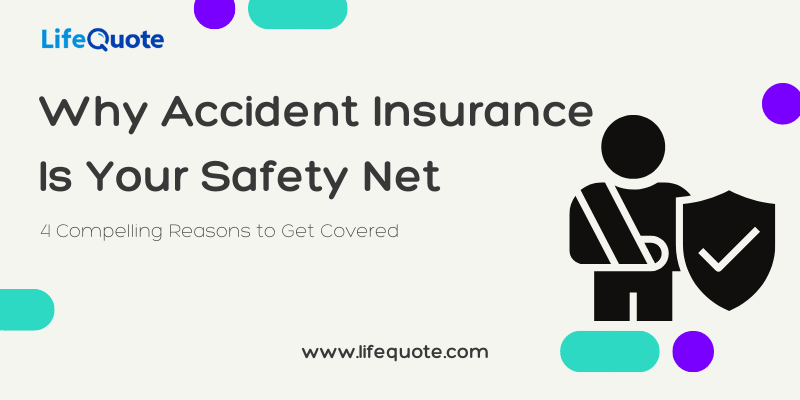- Speak to a licensed sales agent!
- (800) 521-7873
What Do Life Insurance Company Ratings Mean?

Shopping for life insurance can be a stressful and oftentimes confusing process. You only want the best for your family to ensure they’re protected even if the worst occurs, but it can be difficult to determine which carrier and policy is the “best” for you and your needs.
One factor that can be used in finding a trustworthy and secure life insurance company is its financial rating, which indicates that company’s ability to meet its financial obligations and pay claims to its policyholders.

Ratings are issued by independent companies, and the major rating agencies in the United States are A.M. Best, Standard & Poor’s, Moody’s, and Fitch. While these ratings can help in the process of finding the insurance company that’s the right fit, each agency has its own rating scale, and it isn’t always clear what the ratings mean.
To help you understand the rating process and the significance of a company’s rating, we’ve summarized for each of the main rating agencies.
A.M. Best
A.M Best has 15 rating categories ranging from A++ to F. Rating Analysts are assigned to a company to keep an ongoing portfolio assessing the fundamental credit analysis according to specific criteria. Ratings are generally updated annually, but if a company experiences a significant change that is relevant to their rating, a review may occur when A.M. Best becomes aware of that change. This ensures ratings are current, so the consumer can use a company’s score to confidently assess their financial strength and security.
While an Analyst works with a company to monitor and assess, the actual rating is determined via committee to protect against potential bias and to keep ratings as consistent and trustworthy as possible.
Ratings may be appealed if a company has sufficient evidence that clarifies the information used to determine a rating. While A.M. Best is not obligated to accept or wait for an appeal request, the appeal process gives a company a chance to defend their finances if they feel something was overlooked in the information gathering done by the analyst. Ratings can be withdrawn for a variety of reasons, such as a lack of reliable information.
To learn more about the A.M. Best rating process, you can view more details here.
Get Your Free Quote NowStandard & Poor’s
S&P has 20 rating categories ranging from AAA to CC. Ratings are derived from the stand-alone credit profile (SACP) of an insurer along with the support framework. The credit analysis uses projections for the current and upcoming two years and is informed by the past five years unless stated differently.
Several factors that go into the SACP are the Insurance Industry and Country Risk Assessment, capital and earnings, funding structure, liquidity and more. Credit ratings are designed to provide a common global language to compare companies and their potential ability to fulfill financial obligations, like paying a death benefit to a beneficiary.

There are 8 steps involved in the rating process: Contract, Pre-Evaluation, Management Meeting, Analysis, Rating Committee, Notification, Publication, and Surveillance of Rated Issuers and Issues. Similarly to A.M. Best, S&P uses analysts to review information, where they then bring their findings to a management meeting. Analysts then evaluate the information and propose a rating to the rating committee, who then review the recommendation and vote. The issuer is generally provided with a pre-publication of the rating and the accompanying rationale before announcing the public rating and surveying the issuer to ensure the rating remains current.
To learn more about Standard and Poor’s rating process, you can view more details here.
Moody’s
Moody’s has 21 ratings categories ranging from Aaa to C. This scale is referred to as the “Global Long-term Rating Scale” and is a representation of the relative credit risk of financial obligations. In other words, a rating of Aaa means financial obligations are the highest quality and the risk is minimal, while a rating of C indicates financial obligations are likely in default, with an extremely low chance of recovery of principal and interest. Ratings are forward-looking based on data collected by a team of analysts.
The rating process follows 6 steps: analytical team is assigned, issuer shares company information with analysts, analysts meet with management to discuss the information, analytical team brings their information to the rating committee who reviews, and votes, ratings and rationale are delivered, and surveillance is maintained on an on-going basis to keep ratings current. The committee process of assessing and determining the ratings of companies helps ensure the ratings are consistent and as free from bias as possible. Following the committee rating, the issuer is notified of the rating and the factors that determined it, prior to the rating being published.
To learn more about Moody’s rating process, you can view more details here.
Get Your Free Quote NowFitch
Fitch has 22 rating categories ranging from AAA to D. The credit rating assigned is a forward-looking opinion based on data, but it is not a guarantee or absolute measure. Along with ratings, Fitch also assigns the outlooks “stable,” “positive,” or “negative” to indicate the likelihood of the rating being adjusted.
The ratings process typically takes Fitch 2 to 4 weeks, depending on how complex the analysis is. The process involves a thorough analysis by Fitch, an independent perspective, and transparent methodology. Following the determination of a rating, ongoing surveillance is maintained to ensure ratings stay current.

The rating process begins when an issuer signs an engagement letter, which then initiates the assignment of a Fitch primary and secondary analyst. Data is collected, and ratings are determined from a combination of publicly available information as well as confidential information provided by the issuer. Fitch analysts may also ask questions to create a whole picture from the data given. In this meeting, the company being rated has an open dialogue with Fitch analysts to discuss the data and other information about the business, so both sides are on the same page.
The analysts then review the information in detail and take it to a rating committee meeting to determine a company’s rating. The rating outcome is discussed with the company prior to the rating being published. Analysts will continue to monitor and review periodically to keep ratings up to date.
To learn more about Fitch’s rating process, you can view more details here.
Comdex
A company can only have a comdex score if they have been rated by two or more of the above ratings agencies. A comdex score is a representation of a company’s financial rating in comparison with other rated companies on a scale of 1-100. If a company has a comdex score of 70, they score higher than 70% of all other companies that have been rated by two or more agencies. Rankings are compiled by a firm called EbixLife and updated as often as every few weeks in order to remain current.
Comdex ratings can be useful for quickly comparing the financial strength of two life insurance companies, because it does not have the added confusion of different rating scales. It may be hard to compare ratings from A.M. Best and Moody’s for the same company as their scales are different, but if the 2 companies you are reviewing are rated by both, their comdex score can tell you which has the overall more competitive financial ranking.
Get Your Free Quote NowPossible Ratings
It’s important to understand the ratings issued to an insurance company in order to compare them to other carriers. For example, A+ is the second highest rating issued by A.M. Best, but it is the 5th highest by Standard & Poor’s and Fitch. The description of the ratings also varies by company, with “Good” being the 5th and 6th rating from A.M. Best, but 8th, 9th, and 10th from S&P and Fitch. Because ratings are issued by independent rating agencies, the scales don’t line up exactly, and it can be easy to assume that an A+ means the same thing across multiple agencies.

| A.M. Best | Standard & Poor's | Moody's | Fitch | Comdex |
|---|---|---|---|---|
| A++/Superior | AAA/Extremely Strong | Aaa/Exceptional | AAA/Exceptionally Strong | |
| A+/Superior | AA+/Very Strong | Aa1/Excellent | AA+/Very Strong | |
| A/Excellent | AA/Very Strong | Aa2/Excellent | AA/Very Strong | |
| A-/Excellent | AA-/Very Strong | Aa3/Excellent | AA-/Very Strong | |
| B++/Good | A+/Strong | A1/Good | A+/Strong | |
| B+/Good | A/Strong | A2/Good | A/Strong | |
| B/Fair | A-/Strong | A3/Good | A/-Strong | |
| B-/Fair | BBB+/Good | Baa1/Adequate | BBB+/Good | |
| C++/Marginal | BBB/Good | Baa2/Adequate | BBB/Good | |
| C+/Marginal | BBB-/Good | Baa3/Adequate | BBB-/Good | |
| C/Weak | BB+/Marginal | Ba1/Questionable | BB+/Moderately Weak | |
| C-/Weak | BB/Marginal | Ba2/Questionable | BB/Moderately Weak | |
| D/Poor | BB-/Marginal | Ba3/Questionable | BB-/Moderately Weak | |
| E/Under Regulatory Supervision | B+/Weak | B1/Poor | B+/Weak | |
| F/In Liquidation | B/Weak | B2/Poor | B/Weak | |
| B-/Weak | B3/Poor | B-/Weak | ||
| CCC+/Very Weak | Caa1/Very Poor | CCC+/Very Weak | ||
| CCC/Very Weak | Caa2/Very Poor | CCC/Very Weak | ||
| CCC-/Very Weak | Caa3/Very Poor | CCC-/Very Weak | ||
| CC/Extremely Weak | Ca/Extremely Poor | CC/Extremely Weak | ||
| C/Lowest | C/Distressed | |||
| C/Lowest | D/Default |
Getting the Best Policy
At LifeQuote, we work with over 40 of the top-rated agencies. As a broker, we are independent from insurance companies and work for you, the consumer. Your financial future and the security of your family is important, and we take it seriously by only quoting “A” rated companies. Our agents are equipped with the skills and knowledge to help you navigate the application process, comparison shop by providing you with quotes from several companies and give you advice concerning the policy and level of coverage that is best suited to your needs. There is no one company that is the best, because your needs are unique. Get a free quote now to find the policy that is tailored to your needs.
Get Your Free Quote Now



